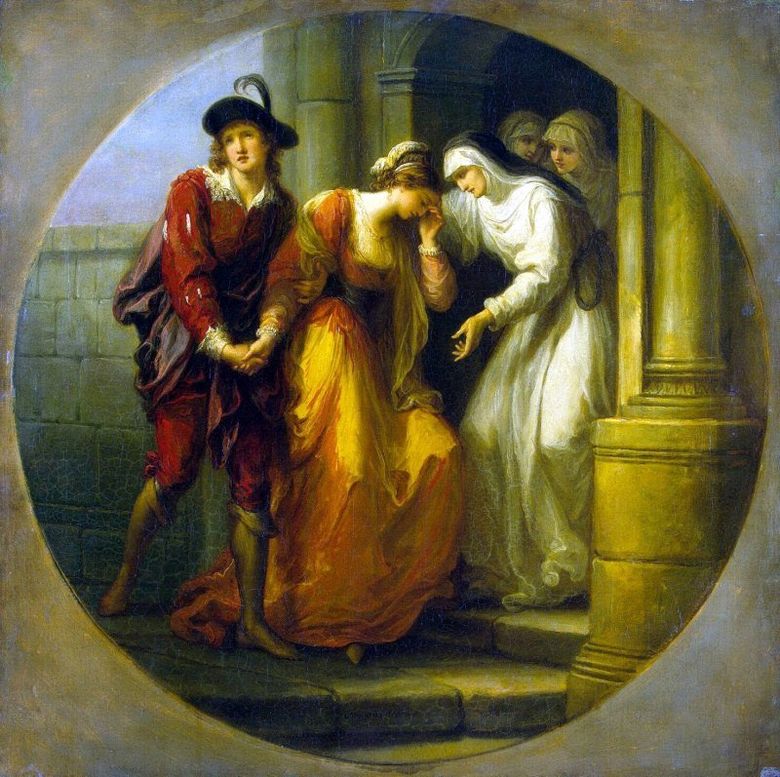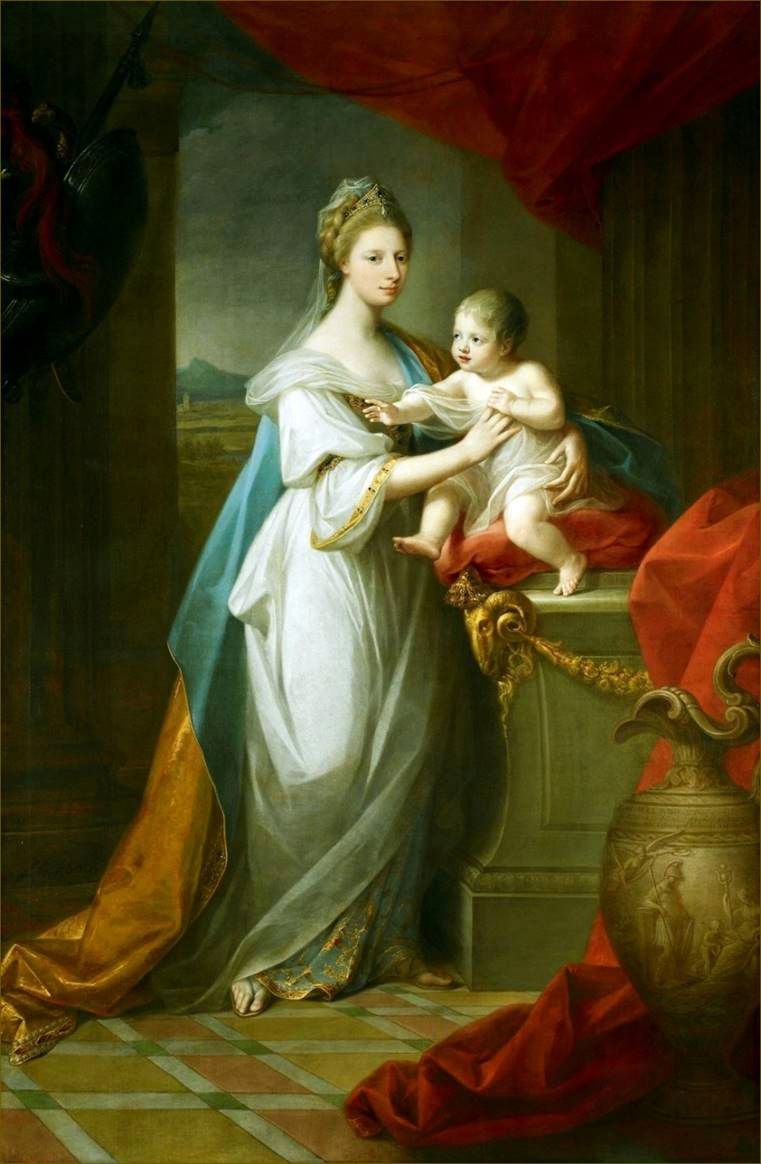
Painting by the Swiss artist Angelica Kaufman “Farewell of Abelard and Eloise.” The diameter of the painting is 65.5 cm, canvas, oil. Abelard or Abelard – one of the most celebrated scholastics and theologians of the Middle Ages, was born in 1079 in the village of Palais near Nantes.
Originally intended for military service, but the irresistible curiosity and, in particular, the desire for scholastic dialectics prompted him to devote himself to the study of sciences. Already in very young years, Abelard listened to the lectures of Jean Rosselin, the founder of nominalism, and in 1099 he arrived in Paris, where at that time a representative of realism – Wilhelm Champosky attracted listeners from all over the world; but soon became a rival and opponent of his teacher. From 1102 Abelard taught in Melune, Corbel and Saint Genevieve, and the number of his disciples grew more and more, and he acquired an irreconcilable enemy in the person of William of Champos. After the latter was elevated to the rank of Chalon bishop, Abelard in 1113 took over the management of the school at the church of Our Lady and at this time reached the apogee of his glory.
Abelard was the universally acknowledged head of dialecticians and, with the clarity and beauty of his exposition, surpassed the other teachers of Paris, then the focal point of the philosophical and theological sciences. At that time in Paris lived 17-year-old niece of the canon Fulber Eloise, famous for its beauty, intelligence and knowledge. Abelard burned with a fiery passion for Eloise, who answered him with complete reciprocity. Thanks to Fulber, Abelard became a teacher and a home person at Eloise, and both lovers enjoyed complete happiness, until Abelard’s passionate songs began to reach Fulbert’s ears.
The attempt of the latter to separate lovers led to the fact that Abelard took Eloise to Brittany, where she gave birth to his son and secretly got married with him, to which Fulber then gave his consent. Soon, however, Eloise returned to her uncle’s house and turned against marriage, not wanting to prevent Abelard from receiving spiritual ranks. Fulber, out of vengeance, ordered Abelard to be scorned, so that by his canonical laws he blocked the path to ecclesiastical honors.
After this, Abelard retired as a simple monk to a monastery in Saint-Denis, and 18-year-old Eloise was tonsured in Argentan. Dissatisfied with the monastic orders, Abelard, on the advice of friends, resumed lecturing in the Mezonville Priory; but the enemies again began to incite persecution against him. His work “Introductio in theologiam” was betrayed in 1121 by burning at the cathedral in Soissons, and he himself was sentenced to imprisonment in the monastery of St. Medard. Having hardly received permission to live outside the monastery walls, Abelard left S. Denis and built himself a chapel and a cell called Paraclete in Nogent on the Seine, where he settled after his appointment as abbot at Saint-Gildas de Ruces in Brittany, Eloise and her pious sisters for monasticism.
Released at last by the pope from the monks of the administration of the monastery, who had been intimidated by him, Abelard, the time that was calm, devoted his review of all his writings and teaching to Mont-Saint-Genevieve. His opponents with Bernhard Clairworth and Norbert of Laon have finally reached the point that in 1140 Abelard’s doctrine was condemned and this verdict was approved by the pope with the order to subject Abelar to imprisonment.
However, the abbot in Cluny, St. Peter, managed to reconcile Abelard with his enemies and with the papal throne. Abelard died in 1142 in the monastery of Saint Markel near Chalon-on-Saone. Eloise, after asking the body of the deceased, buried him in the Paraclete, so that she could lie next to him. She died in 1164. The remains of both were transferred to the museum in 1800, moved from there to the church of Saint-Germain-des-Prés and in 1817 were buried in the Pere Lachaise cemetery.
 Adieu à Abelard et Eloise – Angelika Kaufman
Adieu à Abelard et Eloise – Angelika Kaufman Despedida de Abelard y Eloise – Angelika Kaufman
Despedida de Abelard y Eloise – Angelika Kaufman Princess of Wales Augusta of Hanover with her son by Angelika Kaufman
Princess of Wales Augusta of Hanover with her son by Angelika Kaufman La princesse de Galles Augustus Hanovre avec son fils – Angelika Kaufman
La princesse de Galles Augustus Hanovre avec son fils – Angelika Kaufman Sleeping nymph and shepherd by Angelika Kaufman
Sleeping nymph and shepherd by Angelika Kaufman Venus presents Elena Paris by Angelika Kaufman
Venus presents Elena Paris by Angelika Kaufman Hector invites Paris to the battle by Angelika Kaufman
Hector invites Paris to the battle by Angelika Kaufman Mad Maria by Angelika Kaufman
Mad Maria by Angelika Kaufman